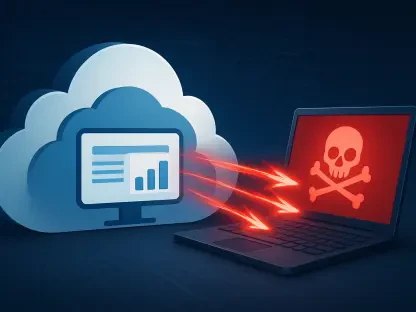A Rising Storm in Mobile Banking Security
In the rapidly digitizing financial landscape of 2025, a staggering statistic emerges: over 3,000 Android devices have already fallen victim to a sophisticated Remote Access Trojan (RAT) named Klopatra, targeting banking apps with unprecedented precision, sending shockwaves through the cybersecurity market. Discovered by threat intelligence experts in late August, this malware has particularly impacted financial hubs in Spain and Italy within Europe. This market analysis aims to dissect the implications of Klopatra’s rise, exploring its impact on the mobile banking sector, the evolving threat landscape, and the strategic responses needed from stakeholders. As mobile transactions continue to dominate consumer behavior, understanding such threats becomes paramount for financial institutions, security providers, and users alike. This examination not only highlights current vulnerabilities but also projects future trends in malware sophistication, offering critical insights for a market at a pivotal crossroads.
Market Trends and Threat Evolution
Mobile Malware’s Leap to Sophistication
The mobile banking security market is witnessing a seismic shift as threats like Klopatra redefine the boundaries of cybercrime. Historically, Android malware relied on basic phishing or simple overlay attacks to steal credentials, but the current landscape shows a marked evolution toward desktop-grade tactics. Klopatra, with its use of native code over traditional Java and integration of commercial-grade protection tools like the Virbox software suite, exemplifies this trend. Such advancements render it nearly undetectable by conventional anti-malware solutions, pushing the market to adapt rapidly. Data indicates that since early 2025, over 40 unique builds of this Trojan have surfaced, each iteration introducing enhanced evasion techniques such as string encryption, signaling a persistent and well-funded development cycle.
Operational Impact on Financial Institutions
Analyzing the operational footprint of Klopatra reveals a dire challenge for the banking sector, especially in targeted regions like Spain and Italy. This Trojan employs Hidden Virtual Network Computing (VNC) to grant attackers remote control over infected devices, often executing fraudulent transactions during off-hours when users are unaware. Market reports suggest that two botnets associated with Klopatra have already compromised thousands of devices, exploiting Accessibility Services to bypass security measures. The financial losses, while not fully quantified, are projected to escalate as attackers refine their methods, urging banks to invest heavily in real-time threat detection and behavioral analytics to mitigate risks in an increasingly vulnerable digital ecosystem.
Organized Crime Driving Market Dynamics
A deeper dive into the market dynamics uncovers the role of organized crime in fueling threats like Klopatra. Linguistic traces in the malware’s code and command-and-control infrastructure point to a Turkish-speaking criminal group orchestrating these attacks, highlighting a structured and profit-driven operation. This trend of organized cybercrime is reshaping the security market, as adversaries focus on monetization through targeted financial fraud rather than sporadic, opportunistic attacks. The implication for the industry is clear: cybersecurity solutions must pivot toward global collaboration and intelligence sharing to disrupt these networks, as regional efforts alone fall short against such coordinated threats.
Future Projections for Mobile Banking Threats
Convergence of Desktop and Mobile Attack Strategies
Looking ahead, market forecasts suggest that Klopatra is a harbinger of a broader convergence between mobile and desktop malware strategies. The adoption of sophisticated protection suites and frequent updates to maintain resilience positions this Trojan as a model for future threats. Analysts predict that by 2027, similar malware could incorporate AI-driven automation to further enhance attack precision, challenging the market to innovate at an accelerated pace. Financial institutions are likely to face increased pressure to adopt advanced security frameworks that transcend static analysis, focusing instead on dynamic, device-level monitoring to counter these evolving risks.
Regulatory and Technological Challenges
Another critical projection for the market involves the interplay of regulatory gaps and technological advancements. Current international cybercrime prosecution frameworks lag behind the agility of criminal groups, potentially emboldening further development of tools like Klopatra. On the technological front, the integration of more robust evasion tactics could strain existing security infrastructure, necessitating significant R&D investments. Market stakeholders are expected to prioritize partnerships with threat intelligence firms to stay ahead of new builds and attack vectors, while regulators may need to streamline cross-border policies to address the global nature of these threats effectively.
Consumer Behavior and Market Adaptation
Consumer behavior will also play a pivotal role in shaping the future market response to mobile banking threats. As awareness of risks like Klopatra grows, demand for secure banking apps with built-in protections such as two-factor authentication is projected to rise. This shift could drive competition among financial service providers to differentiate through enhanced security features, influencing market trends toward user-centric solutions. Simultaneously, Android users are likely to become more cautious with app downloads and device updates, creating an opportunity for security vendors to offer educational tools and services as part of broader market strategies.
Reflecting on the Path Forward
Looking back on this analysis, the emergence of Klopatra marked a critical inflection point for the mobile banking security market in 2025, exposing vulnerabilities that demanded urgent attention. The sophistication of its evasion tactics and the organized criminal intent behind it underscored the escalating stakes for financial institutions and users alike. Moving forward, actionable strategies emerged as essential, including the adoption of behavior-based detection systems to catch anomalies in real time and the prioritization of continuous monitoring of criminal infrastructure to preempt attack waves. Financial institutions found value in fostering global collaboration to dismantle cybercrime networks, while users were encouraged to bolster personal defenses through secure practices. Ultimately, the battle against such threats necessitated a proactive stance, blending innovation with vigilance to safeguard the future of mobile banking in an era of relentless digital risk.









